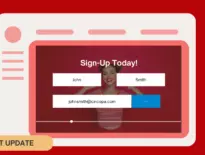Microlearning videos are potent tools for online course educators and enterprises alike. They can help to engage students, onboard and train employees, and much more. Microlearning is delivering small targeted bursts of content. Students today appreciate being able to learn quickly and conveniently. Microlearning videos provide the perfect way to capture and hold their attention.

Microlearning Videos: Bite-Sized Learning for Maximum Impact
A microlearning video is a short video that delivers an on-demand lesson. It only lasts for about two to five minutes and sticks to one bite-sized topic. It will often use visuals and narration which can be on-screen or voice-over. The content is designed for self-paced learning.
- Student education can benefit when educators supplement traditional learning methods with microlearning videos. An online course that includes microlearning videos will be more engaging and help students to retain more. The delivery of short videos allows them to learn in a way they already love thanks to social media platforms such as TikTok and Instagram.
- Employee onboarding and training are areas where employees can benefit from short on-demand corporate videos. Employees can learn what they need to learn as and when they need it.
- Customer service can improve with the use of microlearning videos. These videos can show customers how to use products and services. They can appear in the learning section of a website or on social media. Customer service reps can direct customers to them and save themselves the trouble of explaining the same thing over and over.
Students today will often do an online course to do something such as learn a language. Duolingo takes this to the next level by using microlearning to help students learn languages from anywhere at any time. The short lessons involve listening and speaking. Students earn points by taking quizzes and completing ‘text’ conversations.
Noom is a health and nutrition app that uses a gamification approach to help with online learning. Interactive exercises and quizzes keep users engaged and lessons are completed in a minute or two.
Asurint is a background screening tech company that uses microlearning throughout the onboarding process. With this type of online corporate training, it has reduced onboarding time by weeks. Retention of new hires has also increased to 100%. Employees are just as invested in the training as the company. They continue to access microlearning units voluntarily. They can learn more about data security, compliance, HR, and industry-specific regulations through microlearning videos.

Some of the main benefits of microlearning videos include:
- Convenience: The fact that learners can access microlearning videos from mobile phones, laptops, desktops, or tablets makes them very convenient. This is particularly valuable when students are unable to attend in-person training.
- Customization: Customizing microlearning videos helps them to meet the specific needs of individuals. They can choose the videos most appropriate to their learning experience and consume them at their own pace. They will focus on areas where they need the most help without having to deal with an overwhelming amount of information.
- Time efficiency: The time constraints of micro videos means information must be to-the-point. Rather than listening to long, tedious videos students can benefit more from bite-sized videos that form part of an online course. They can learn in a more flexible and less time-consuming way.
- Reinforcement: If a student has completed some online learning, watching bite-sized videos reinforces the key ideas. Critical microlearning bites can serve to refresh their minds and jog their memories.
- Accessibility: Anyone can access microlearning videos as long as they have a device and an internet connection. This helps to make online learning more inclusive.
When learning comes in small bites, students can see their progress and this can help them to stay motivated.
The anatomy of microlearning Videos: Key features and characteristics
Good microlearning videos must present information in a logical manner. They must focus first on the learner. On-video tools and engaging visuals can help to boost engagement on videos.
- Brandable, customizable video templates in a range of styles can simplify the making of microlearning videos.
- A clickable call-to-action button at the end of a video can guide viewers to additional resources. This is much better than trying to include too much in a video.
- Subtitles and/or closed captions can help more viewers get full viewing benefits of the videos. They can help employees who are hard of hearing or those who need to access videos on a morning commute.
- Powerful search should be available so employees can find the right corporate videos. They should be able to use keywords to find relevant training videos. If videos are interactive, they should include large buttons or links.
- Animations are easy to build into microlearning modules and make them more engaging.
Using the Cincopa private enterprise video hosting platform gives organizations access to many on-video features, such as those mentioned above. They can use CTAs, subtitles, video templates and more to offer students a seamless online learning experience. It also helps to simplify media management so students can always easily find what they need. Video upload and sharing is simple using this platform.

Microlearning versus traditional learning videos
The main difference between microlearning and traditional learning videos is in the length of learning sessions and the delivery style. In traditional learning environments, students are physically present in classrooms. There is a lack of personalization and students are passive rather than active learners. Students are often not motivated or engaged in the learning process.
Microlearning is on-demand so students can access it at any time and learn when it’s convenient for them. Its popularity has increased with the increase in mobile use. It also recognizes the limited time people have to learn today and that attention spans are declining. Ways of learning have needed to adapt to the changing digital environment.
Creating a successful online course using microlearning requires more than just chopping content up into bite-sized videos. Each video has to be extremely focused and keep viewers fully engaged. A bite-sized video library must be well-organized and mobile-friendly. Fast video upload and playback should be possible.
Microlearning videos in corporate training: Boosting employee performance
There still tends to be a gap between the learning needs of employees and what companies have to offer. Many of them do offer online video training rather than in-person training. There are many online corporate training courses available for everything from handling finances to digital marketing.
The problem is that employees need to receive video training at the point of need and have it delivered in the easiest and quickest way. Traditional types of learning in the workplace can easily overwhelm employees and make them disengage. Companies that embrace microlearning will reap the rewards and can build a culture of engaged and motivated employees.
Learning at the moment of need: Employees can learn concepts and ideas at the moment of application. For example, they could quickly learn about a new feature in Payroll or other software to help them to complete a particular task.
Learning in the flow of work: Learning in the flow of work helps employees to carry out processes more efficiently or enhance their performance. Watching a work-related task in action could help them to learn about common mistakes they should avoid. They could watch a two-minute tutorial on the basics of customer returns.
Microlearning is perfect for many corporate activities including onboarding, compliance training, and skills training. Reusing existing video assets already in a video library can help companies to create corporate video for microlearning.
Some companies have started curating existing content and delivering it to employees in bite-sized form. Training participation becomes much higher and many companies have reported to train thousands of employees in less than six months.
Conclusion
Microlearning videos offer a convenient, quick, and engaging way to learn. They can help to achieve learning goals more efficiently. Students can learn faster and retain what they learn for longer. Knowing which information to include and fitting it all into a short video can be challenging.
Using the Cincopa enterprise video hosting platform can help with media management, including managing microlearning video content. It offers various on-video effects like CTAs and subtitles and much more. Companies can also easily repurpose their existing video content in their video libraries to make it suitable for microlearning. Cincopa offers a 30-day free trial for those interested in trying out the platform.










